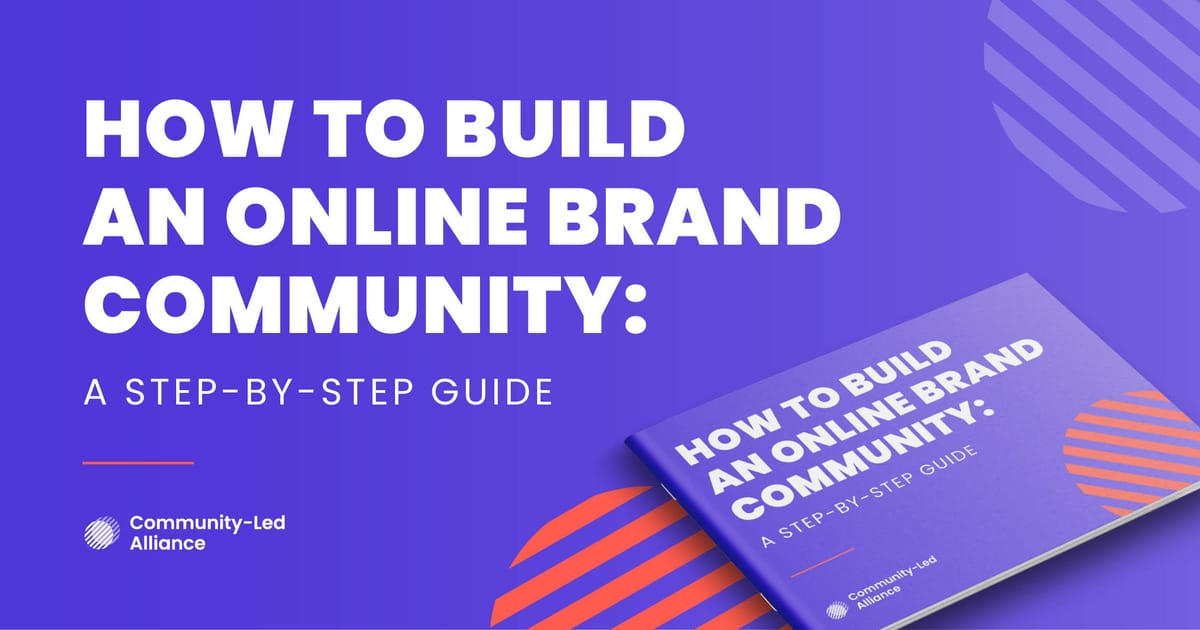Online community spaces are an invaluable resource for businesses. They allow organizations to make improvements to their products, enhance their brand reputation, drive sustainable growth, and so much more.
But a well-managed community can foster membership innovation, collaboration, and even provide advocacy for your products and services.
However, managing a community effectively is no easy task. It’s not just creating a platform for members and letting them run wild on it with no guidance. Community managers are responsible for providing clear structure and guidelines to ensure all members feel welcome, included, and free to share their ideas without judgment.
In this article, we’ll take you through the best practices and guidelines you can use to create an inclusive, trusting, and engaged community, whatever your industry.
Why are community guidelines important?
Having carefully moderated guidelines for a community is paramount for ensuring a respectful, supportive, and thriving community space. It’s important that all members feel welcomed into the community so they want to stick around.
Community guidelines help to ensure that discussions and interactions in the community space remain respectful and professional, and help prevent harassment, bullying, or other forms of discrimination from occurring. This is all in aid of facilitating a safe space for all members to engage with the community.
Your guidelines also encourage members to share high quality content, keep discussions on-topic and relevant, and also discourage non-constructive posts. As a result, the community remains a space where members can have meaningful and productive conversations, and your organization can collect valuable insights and feedback which can then inform business decisions.
A well-moderated community attracts high-quality contributors, increases engagement, and allows for shared learning between members.

Essential guidelines for managing your community
So, now you know just how important it is to have community guidelines in place, which are the best ones to have? We’ll take you through the top community guidelines you should be using.
Set up a welcome message
First things first, ensure new members are warmly welcomed into the community. Pin the welcome message at the top of the group so it’s the first message newbies see when they join.
What should you include in the welcome message? Key information about the aim of the community, such as why it exists and what kind of things members can post. If your community is housed on platforms like Slack or Discord, you can create channels for specific topics, and then your message can explain what each designated channel is for.
You could also consider adding an ‘introduction’ channel for new members to introduce themselves to the community when they join. You can also tag all new members in a weekly post to encourage the veteran members to say introduce themselves and welcome them in. These little touches will help your new members feel immediately included.
Establish a code of conduct
A code of conduct will clearly establish how your members should behave within the community. These rules should highlight the need to respect the opinions of other members and emphasize a zero tolerance policy against harassment and discrimination.
Examples of prohibited conduct could be:
- No hateful or insulting language.
- No discriminatory content or language.
- No scamming or deceptive posts.
- No doxxing or posting personal information about other members.
- Don’t discuss or engage in any unlawful activities.
- Don’t post any mature content.
- Don’t spam the group.
- No unsolicited advertising; any authorized promotions should be kept within designated areas.
Ensure your code of conduct is direct and easy to understand. Don’t use vague or unnecessarily complex terms that could be misinterpreted or allow members to create loop holes.
Also, be sure that you’re not being too restrictive or extensive with the guidelines, as this could overwhelm members and make them afraid to post for fear of breaking the rules.
Your code of conduct should be in place to ensure all members interact in a respectful manner and prevent irrelevant or inappropriate posts from being published.
Here's an example from our community Slack channel:
Consistently moderate
Once you’ve got a code of conduct in place, you can now start to moderate your community’s activities.
Moderating effectively involves:
- Removing any offensive or inappropriate content, and ensuring all members maintain a professional and respectful tone at all times.
- Ensuring discussions remain relevant and are kept in the correct channels. Some off-topic discussions may be beneficial for building relationships, but these can be relegated to off-topic channels so the posting of unrelated content doesn’t become too excessive.
- Keeping the community tidy. Remind members to stick to the relevant channels with their content so the community remains a place that is easy for everyone to navigate.
You’ll need clear rules in place about the consequences of members not adhering to these guidelines. This could range from removing the posts, giving out warnings, temporary bans, or even permanent removal from the community, depending on the severity of the rule breaking.
The guidelines need to be enforced fairly and consistently to keep the community a positive and welcoming space. Ensure any decisions you make are communicated clearly to members and be open to receiving any feedback about your moderation.
It’s essential to monitor your community’s activities continuously and only intervene when necessary. If your moderating is too strict, members might be tempted to leave.
As the community grows bigger and it becomes trickier to monitor, you can implement tools to help you edit, flag, and delete the inappropriate content. This will free up more time for you to focus on other tasks, and ensure your community management remains consistent.
Encourage collaboration
The main purpose of a community space is for members to collaborate and share knowledge and learnings. So it’s important to encourage and remind members to help each other with any issues or queries, work together to come up with solutions, and provide constructive feedback on any projects or ideas they might post about.
Helping your members connect with each other increases engagement, builds trust, and ensures that your members continue to be actively engaged on the community platform.

Provide quick responses
Your members will naturally come to you with any questions or concerns, and ensuring a quick response shows that you’re active and committed to supporting them and the community at large.
Additionally, if your community members feel heard and supported, they’re more likely to continue participating in discussions and contributing to the community in general.
However, while it’s crucial to provide quick responses, you need to ensure everything you say to them is accurate and correct. A hastily typed response or incorrect answer will make the community lose trust in you and the organization.
Review and update guidelines
No community is stagnant. As it expands and evolves with new topics, issues, or exciting developments in the industry, you’ll need to review and update your guidelines so they remain relevant and beneficial to your members.
As time goes on, you’ll learn what works and what doesn’t for your community. By regularly updating the guidelines, you can improve the functionality of the community.
As you update the guidelines, communicate these changes to your community, along with your reasons for the changes and how your community is expected to adhere to them. Ensure you ask for feedback on these updates so your guidelines are serving the community effectively and aren’t too restrictive.
Final thoughts
A well-managed community can be instrumental in driving success for your business.
By creating a welcoming environment, establishing clear guidelines, and providing timely responses all helps encourage engaging discussions and increased participation from your members.
Adopting the best practices mentioned in this article will allow you to create an inclusive, trusting, and sustainable community that benefits all members, as well as your business.
Get your free copy of our How to Build a Community Playbook to unlock the potential of your community.





